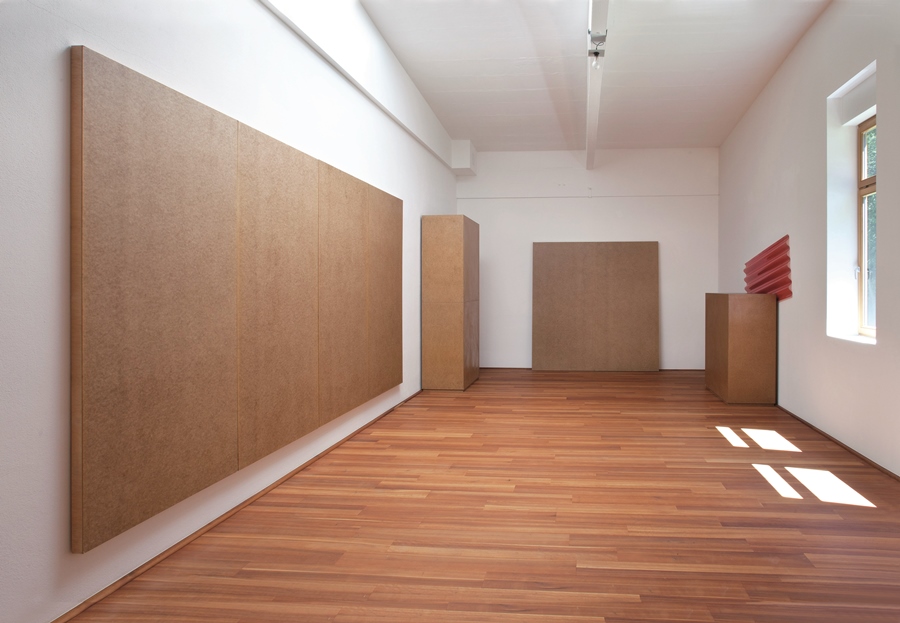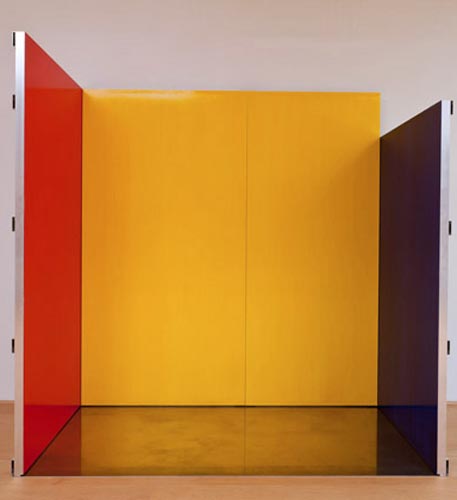IMI Knoebel

Habe und Ehre, 1985
© VG Bild-Kunst, Bonn 2011
IMI (Wolf) Knoebel proved himself as a frontier worker between all art disciplines during his studies with Joseph Beuys in the 1960s. Open to new theories such as the extension of the concept of art, he developed – independent of Beuys, parallel to the American representatives of the minimal art and together with his co-students IMI Giese, Blinky Palermo and Katharina Sieverding – a minimalist or Conceptual form language. At Knoebel's uncoloured-sculptural beginnings in his academy studio, which he 1968 as an art ensemble "room 19" predominantly with hard fibre and wedge frames, his installation reminds Me "Have and honor". From the simple standard material of the post-war years, Knoebel builds his between image and sculpture, civic furniture and altarpiece, order and disorder changing works.
In the 1970s, the Galerie Friedrich accompanied the annual exhibitions of IMI Knoebel's way to colour. For the first time, Knoebel 1977 showed his cut, partially overlapping, free plywood forms in "24 colors – for Blinky". Like his knife-cut collages, they derive the coloured and expressive part of the oeuvre, which was to be modeled in 2011 for the Cathedral of Reims, the choir chapels. At the same time, 1978 was concentrated on the basic colours red, yellow and blue in the first strict rectangular form. Knoebel also began to incorporate metal into his work in the 1970s. From 1991 all this resulted in image works on aluminium like the current series "Fishing", "place" and "I Not", the latter an answer to Barnett Newman's Swatch Pictures "Who's afraid of red, yellow and blue", with which Newman 1969-70 the Strictly constructivist Had helped to revive the basic color chord.

